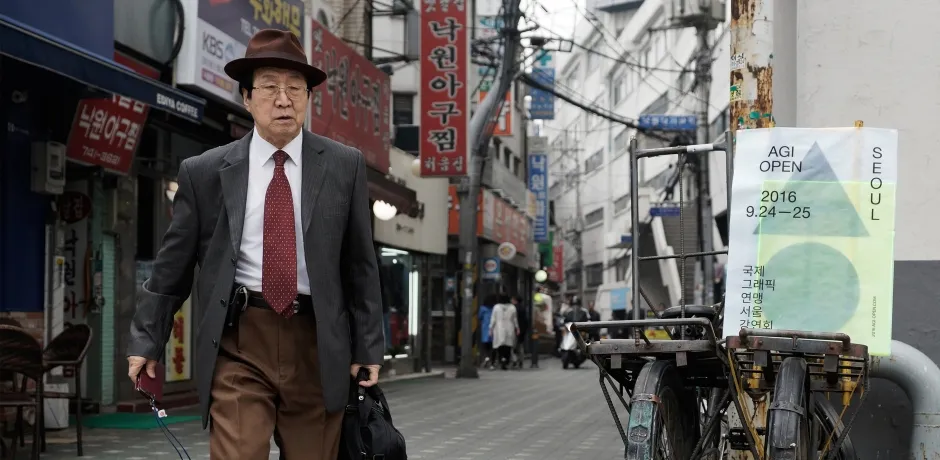As International President of Alliance Graphique Internationale, Nikki Gonnissen opened the AGI Open congress in Seoul, on November 24 September 2016. Find an impression of AGI Open and Nikki’s speech, below. The congress happened on 24 and 25 September 2016.
agi open seoul 2016

Dear visitors, friends, dear members of AGI,
I’m delighted to welcome you all to this edition of AGI Open. In my capacity as president of AGI I am given the honour to ‘open’ AGI Open, but let’s be honest: it has been the fantastic organisational team around Ahn San-Soo who did the actual work.
I would like express my gratitude to them for putting together such a great programme for the coming two days. I’m sure AGI Open will showcase some of the most exciting design projects in today’s world, and – just as important – it will immerse us in the unique culture of South Korea.
As members of the International Executive Committee we have had the chance to meet a group of young Korean designers.
The exchange of ideas was stimulating for all of us, because it reflected the vitality of the Korean design culture, and the eagerness of new generations to contribute to it. Their work demonstrates a sincere human quality that makes me optimistic about the direction graphic design is taking in these turbulent times.
While I was preparing for the visit to Seoul I read several reports on Mr. Park Won-Soon, who is in office as Seoul’s mayor since 2011. With his background as a civil rights activist Mr. Park tries to tackle social, environmental and political issues by listening to the ideas of civilians. He picks up on grassroots initiatives to implement change, and I applaud him for that.
I think the world of design in general, and certainly AGI as an organisation of design professionals can learn from this approach. And: what better platform to start doing so than this meeting of minds at AGI Open? Thank you, mayor Park and the city of Seoul for the inspiration you provide. And thanks to our sponsors for their investments in this event.
AGI has a worldwide reputation as the guardian of quality in graphic design. We can build on the expertise of a group of highly distinguished professionals who, over the course of their careers, have changed our perception of visual communication. They broke down barriers and introduced new perspectives.
But, for AGI to remain a relevant force, it is important to document and show this impressive heritage and to confront it with upcoming design practices, new questions and a changing sense of urgency. That is why meetings such as AGI Open are so valuable. They liaise between experience and experiment, between merit and promise, between developed and developing practices, between mature and young.
Looking at the situation of Korean design in particular I would say that the fabulous ‘Korea Now’ exhibition in the Museum of Decorative Arts in Paris made this point very clearly. The future of design in South Korea cannot be defined without recognising its past.
But I would also like to turn this argument around: contemporary design has to reflect the urgencies of today’s societies to keep its history alive. In Korea and anywhere else in the world…
During the next two days you’ll be flooded with thoughts, strategies, opinions and a wide selection of works by AGI members who represent completely different cultures. Their presentations will no doubt illustrate the unique characteristics of design in certain countries, but you will also witness how the exchange between cultures has shaped a global visual culture. This aspect of today’s design world is especially present in design education, which has become a truly international affair with students travelling the globe to find the right education.
In my teaching I have noticed how these students balance between a global design language and the urge to reflect the essentials of their native design culture. For AGI the future of design education is an important issue; a theme we wish to develop further in the coming years. Getting to know your thoughts is one step towards this aim, so please use this meeting to speak out when you feel challenged!
Technology plays a huge role in shaping our professional practice, and it has certainly changed the way people ‘consume’ the information we design. I think the Asian curiosity for new technologies – which seems to be integral part of your DNA – will clearly manifest itself over the next days. The way that graphic design merges with these new technologies is another important topic on AGI’s agenda, and I hope AGI Open shows us interesting directions for further exploration.
Next to heritage, education and technology there is one more subject I would like to mention. Graphic design’s concern for social issues is one that speaks to my heart. It’s no coincidence that our hosts translated the Buddhist mentality inherent to their culture in the overall theme of this year’s AGI meetings: Love.
This week we talk about design for cities, societies and local environments. I really look forward to hear how designers integrate values like respect, care and love into projects for local and global communities. They might give a much-needed antidote to the atmosphere of disrespect and xenophobia that seems to dominate world politics today.
Ladies and gentlemen, I wish you a mind-boggling, inspiring and ‘inclusive’ event, in which we all will learn from each other, regardless of our nationality, culture, gender or age.
Like Seoul’s mayor Park we should try to define new directions in design by listening to different voices. The future of graphic design – and the future of AGI – depends on the input of established professionals and on the new impulses a tech-savvy, socially engaged and evermore global community of young image makers brings to the table. Please join us in our explorations.
Further Info
Related Story
look for love